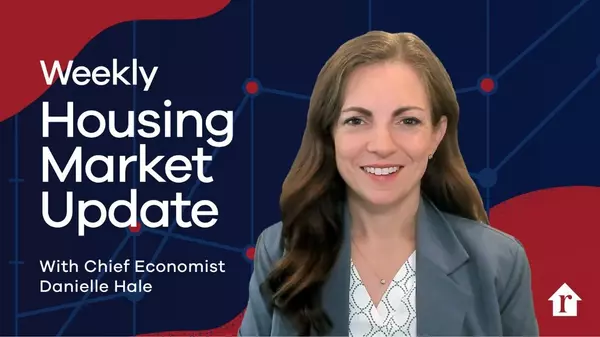As Flood Maps Shift, So Do Homebuyers—and It’s Changing Which Homes Sell the Fastest
When the federal government shut down at midnight on Sept. 30, authorization for the National Flood Insurance Program expired—putting coverage for nearly 5 million homes in limbo. The lapse also jeopardized an estimated 1,300 home closings every day, according to data from the National Association of Realtors®, as buyers in flood-prone areas that are required to carry flood insurance suddenly found themselves unable to secure mandatory coverage.
Lenders have temporarily suspended these requirements while the shutdown drags on, but the lapse in this cornerstone of the insurance market has thrown into stark relief how flood risk is—and isn’t—changing which homes sell.
A Realtor.com® analysis of homes in Miami and Tampa, FL, found that houses with lower flood risk—as measured by their First Street Flood Factor Score—have seen faster price appreciation when compared to high-risk homes over the past 10 years. The gap has widened significantly in the past three years, signaling stronger demand and quicker sales for homes on higher ground.
But while these insights point to broad trends, there may be some segments of the market that are looking past these indicators.
“In the luxury market, demand remains extremely strong for coastal and waterfront homes,” explains Eloy Carmenate of The Corcoran Group in South Florida. “Buyers simply gravitate toward properties built above the required elevation, so the market adapts naturally without reducing interest.”
Being in a FEMA-designated Special Flood Hazard Area (SFHA) doesn’t mean your home carries the same level of danger as your neighbor's. Elevation, drainage, and construction standards all matter—and together, they’re reshaping which homes sell the fastest as buyers grow more attuned to flood maps and property-level risk.
Buyers in flux: How awareness is rapidly evolving
Before the National Flood Insurance Plan (NFIP) lapse drew national attention, buyers were already changing how they evaluated risk when buying a property, according to Aris Papadopoulos, founder of the Resilience Action Fund, a nonprofit dedicated to helping people build long-lasting communities and homes.
He estimates that about a quarter of buyers today actively consider flood data when choosing where to live, while another quarter are aware of the risk but don’t act on it, and half remain largely unaware altogether.
But Papadopoulos predicts that we’re on the precipice of major changes in evaluating risk.
“Within a decade, half of all buyers will know and act on flood risk,” he says. “The market is already adjusting accordingly.”
A recent survey from Realtor.com backs him up: Roughly 30% of current homebuyers said they’ve changed the geographic area of their search because of insurance challenges, while 25% have overhauled their homebuying strategy entirely.
Younger buyers are leading the shift, hinting that these numbers will only grow over the coming decades. More than 30% of Gen Z respondents said they’ve completely changed how and where they plan to buy because of insurance or climate-related risks, compared with just 6% of baby boomers.
The price divide: How risk is rewriting market velocity
To understand how this awareness is playing out in the market, look no further than Miami and Tampa, both high flood-risk markets
In both cities, low-risk homes have been appreciating faster than their high-risk counterparts for at least a decade, but the gap between their appreciation rates has widened significantly since 2022, according to an analysis by Realtor.com.
That gap correlates strongly with the rise in billion-dollar disasters in the state. From 2022 to 2024, there were 23 such events in Florida, accounting for nearly 40% of all billion-dollar natural disasters in the state since 1980, according to data from the National Oceanic and Atmospheric Administration.
“The faster price appreciation of homes in low-risk areas indicates higher demand for such homes when compared to high-risk homes,” explains Jiayi Xu, an economist at Realtor.com.
She also notes that while climate-related risks such as flooding, wildfire, and heat haven’t replaced traditional drivers like school quality or job access, they’re increasingly shaping buyer priorities.
That growing awareness is translating into faster appreciation and fewer contingencies for homes on higher, safer ground, and slower sales for those on the wrong side of the map—at least for some properties.
Flood maps 2.0: The tools driving the shift
A slew of tools is helping buyers and builders better equip homes for flood risk.
“Data democracy is transforming how people interpret property risk,” says Papadopoulos. “Buyers driving through mixed-elevation neighborhoods now instantly see which homes have been elevated—and lower their offers on the ones that haven’t.”
Thanks to updated FEMA flood maps and a growing number of private tools like Flood Factor, today’s buyers can pull up detailed maps in seconds, compare a property’s risk profile to its neighbors', and even estimate how elevation or drainage improvements might affect future insurance costs.
Luxury buyers are leading these shifts, says Carmenate.
“Luxury buyers actively seek homes built above FEMA standards, often at 14 feet or higher. Elevation and flood mitigation are considered standard features, giving buyers confidence rather than causing hesitation,” he explains.
His commentary highlights a growing divide in flood-prone areas. While the tools to analyze flood risk are rapidly spreading, the capital to invest in a property to make it flood-resilient remains concentrated in select pockets.
The insurance spiral: When coverage does and doesn't become a deal breaker
This divide is being echoed in the insurance market.
For many Americans, the cost of protecting their homes is becoming as daunting as the price of buying one. Nearly half of U.S. homeowners (47%) have faced (or expect to face) difficulty renewing their insurance policies, according to the recent Realtor.com survey. Also, 42% have already seen their premiums rise, and a striking 58% say they would consider dropping their coverage entirely if costs continue to climb.
That financial pressure is beginning to show in the market. As flood insurance costs surge and eligibility rules tighten, more buyers are drawing a hard line around risk.
“Any loan requiring flood insurance has become a deal breaker during the current government shutdown,” says Papadopoulos. While some buyers may be able to take over the seller’s policy, that policy can’t be renewed until the government reauthorizes the NFIP—all at the height of hurricane season.
Though private flood insurance is available in some markets, it’s often prohibitively expensive for the average homeowner. But in high-end segments, those costs are more easily absorbed.
“For high-end buyers, flood risk is rarely a concern,” explains Carmenate. “These buyers are well-prepared and able to secure the necessary insurance. In fact, having proper coverage and resilient design often enhances the property’s value and attractiveness.”
What sellers and buyers should do now
As flood awareness rises, both sellers and buyers are learning that preparation and transparency can make or break a deal.
For sellers, the first step is documentation. Obtaining and sharing an elevation certificate early in the listing process can help verify a property’s height relative to local flood levels and reassure buyers who are weighing risk. It can also strengthen pricing power in markets where elevation directly affects insurance eligibility.
Sellers can also add value through simple improvements that address drainage and waterproofing—grading the yard away from the foundation, cleaning gutters, or adding downspout extensions.
For buyers, due diligence now starts long before the showing. Free tools such as Flood Factor and FEMA flood maps make it easy to check whether a property lies in a flood zone and how severe the risk may be.
Buyers should also ask their lender about flood-zone loan requirements, since most federally backed mortgages require proof of coverage before closing. And as insurance premiums continue to rise, factoring those annual costs into the total price of homeownership is no longer optional—it’s essential.
In today’s market, information is as valuable as elevation. Knowing a property’s flood history, insurance obligations, and structural defenses doesn’t just protect your investment—it can determine how quickly that investment changes hands.
Categories
Recent Posts










GET MORE INFORMATION

